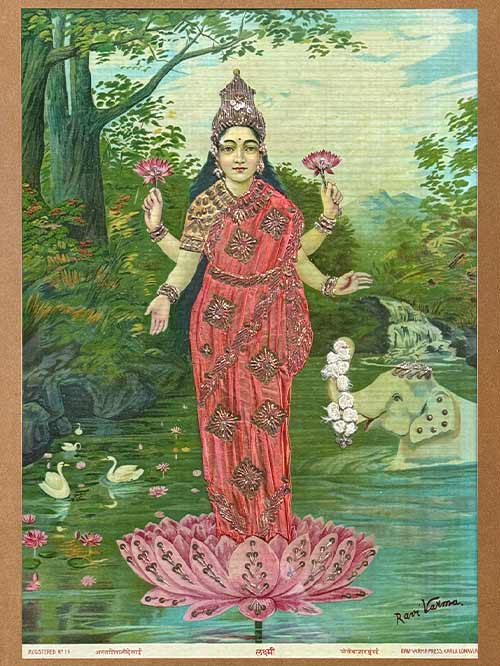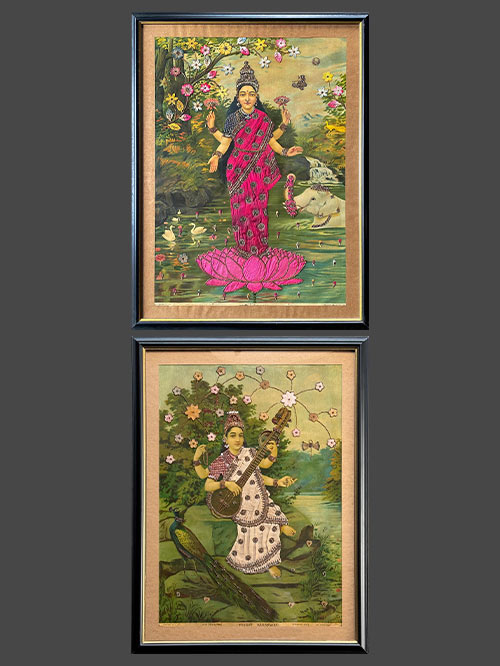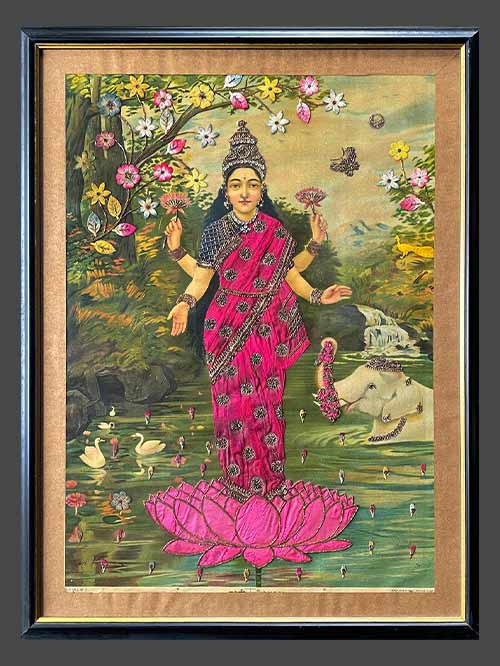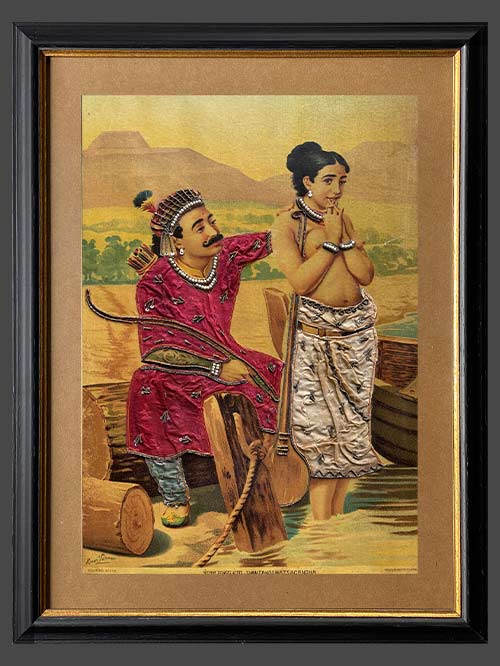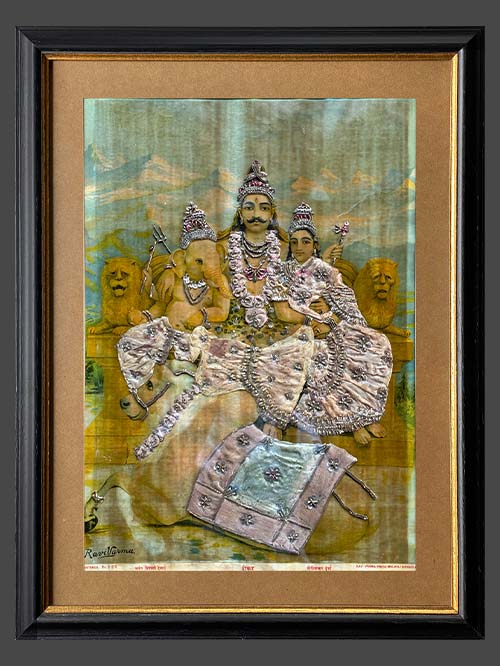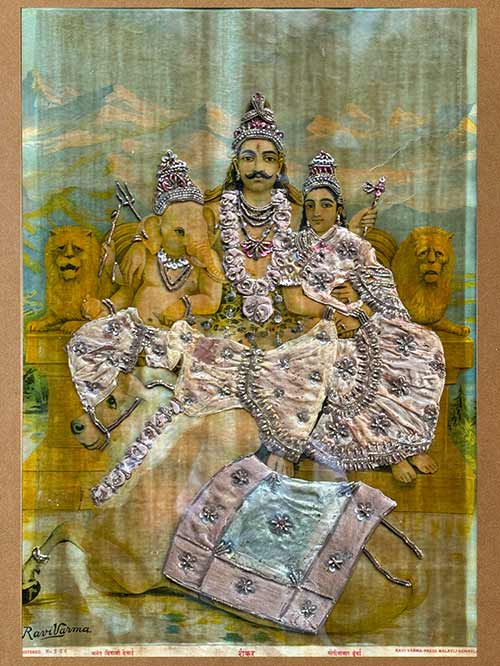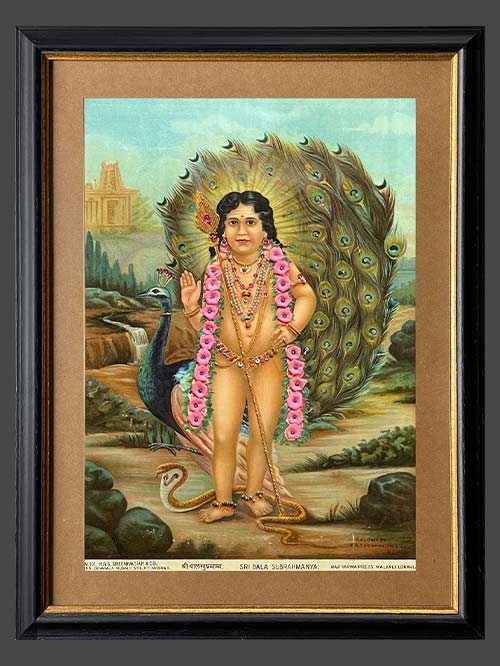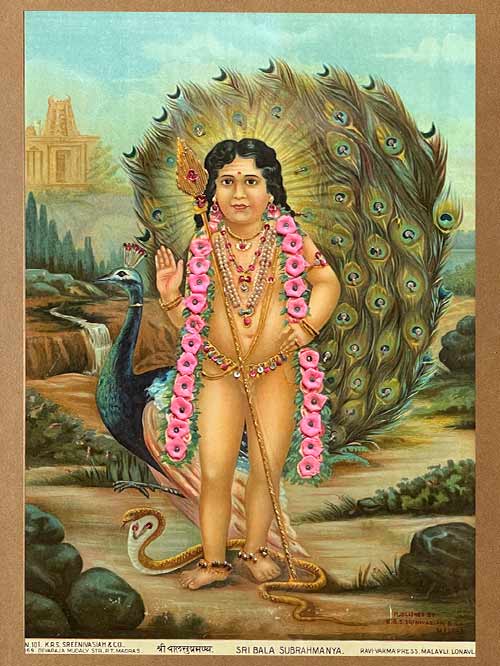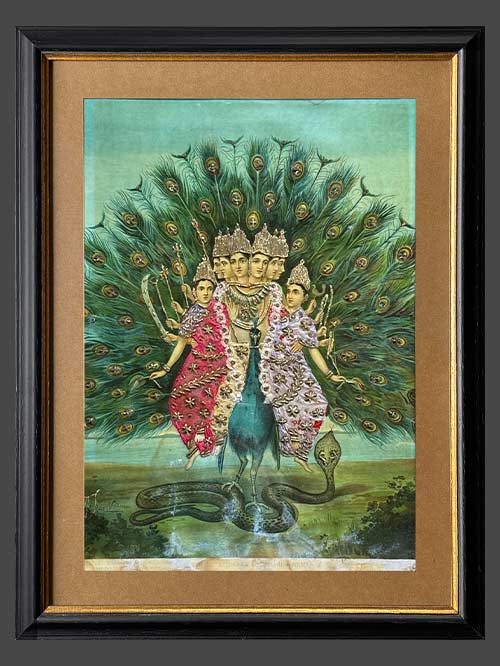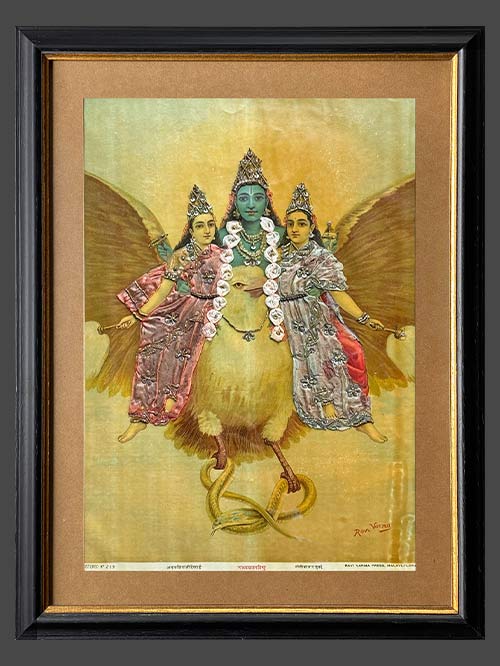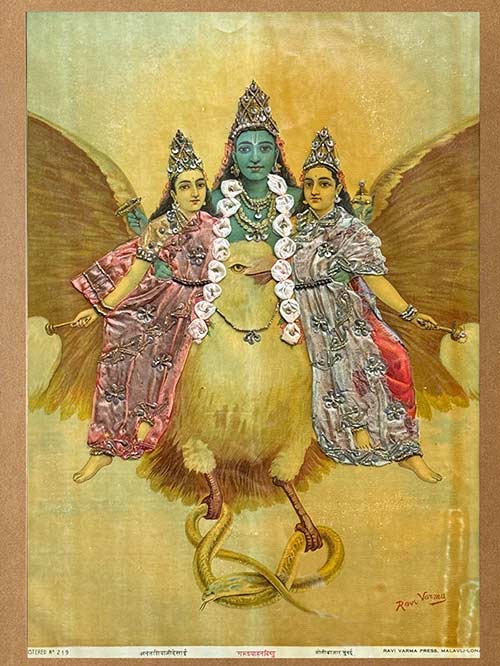Lakshmi
Published at the Ravi Varma Press, Karla, Lonavla
by Raja Ravi Varma
chromolithograph with fabric appliqué
Lakshmi, the goddess of beauty, prosperity, luck and wealth- is shown standing on a lotus emerging from a river, an elephant (gaja) half submerged, stands to her left holding a garland in his trunk. A cascading waterfall in the background. Lakshmi has four arms, the upper two holding lotuses and the lower two in Abhayamudra (a gesture of reassurance, safety) and Varadamudra (gesture of granting of wishes).
Ravi Varma occupies an important place in Indian art history. He developed a painting style that appropriated the illusionary techniques of European oil painting with traditional Indian subject matter. The popularity of Ravi Varma’s paintings gave him the idea to make oleographs that would be available to the general public, instead of only elite patrons. Oleographs, also called chromolithographs, are multi-colour art prints, stemming from the process of lithography.
These immensely popular chromolithographs from the Ravi Varma press quickly set a new iconographical standard for the traditional Indian heroes and deities. Often the figures were embellished with embroidered sequins and other decorative material, creating vibrant pulsating images.
Image Size (cms): 49.5 (H) x 34.5 (W)
Image Size (inches): 19.5 (H) x 13.6 (W)
Framed Size (cms): 62 (H) x 48.5 (W)
Framed Size (inches): 24.5 (H) x 19 (W)


